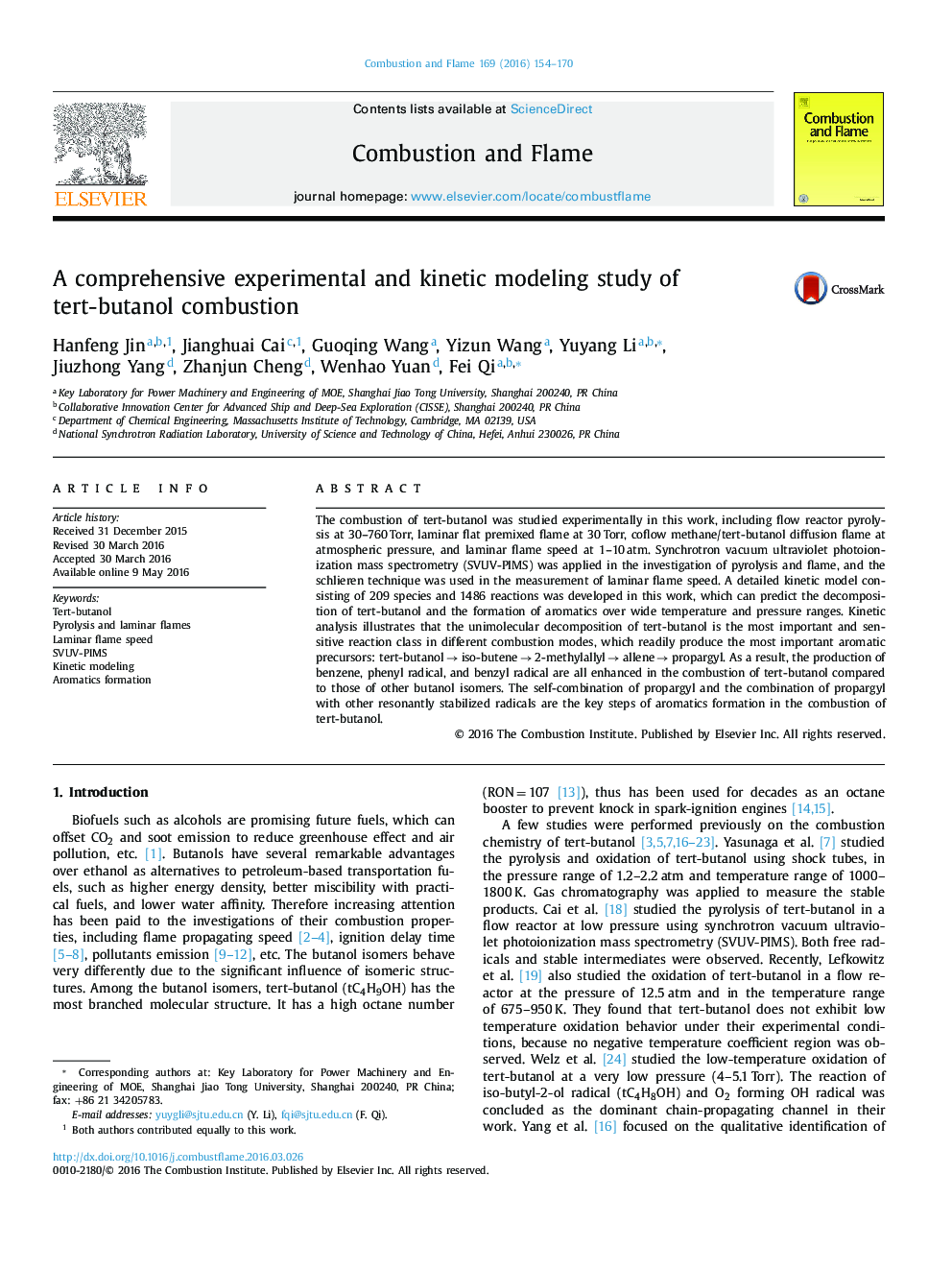| Article ID | Journal | Published Year | Pages | File Type |
|---|---|---|---|---|
| 166231 | Combustion and Flame | 2016 | 17 Pages |
The combustion of tert-butanol was studied experimentally in this work, including flow reactor pyrolysis at 30–760 Torr, laminar flat premixed flame at 30 Torr, coflow methane/tert-butanol diffusion flame at atmospheric pressure, and laminar flame speed at 1–10 atm. Synchrotron vacuum ultraviolet photoionization mass spectrometry (SVUV-PIMS) was applied in the investigation of pyrolysis and flame, and the schlieren technique was used in the measurement of laminar flame speed. A detailed kinetic model consisting of 209 species and 1486 reactions was developed in this work, which can predict the decomposition of tert-butanol and the formation of aromatics over wide temperature and pressure ranges. Kinetic analysis illustrates that the unimolecular decomposition of tert-butanol is the most important and sensitive reaction class in different combustion modes, which readily produce the most important aromatic precursors: tert-butanol → iso-butene → 2-methylallyl → allene → propargyl. As a result, the production of benzene, phenyl radical, and benzyl radical are all enhanced in the combustion of tert-butanol compared to those of other butanol isomers. The self-combination of propargyl and the combination of propargyl with other resonantly stabilized radicals are the key steps of aromatics formation in the combustion of tert-butanol.
